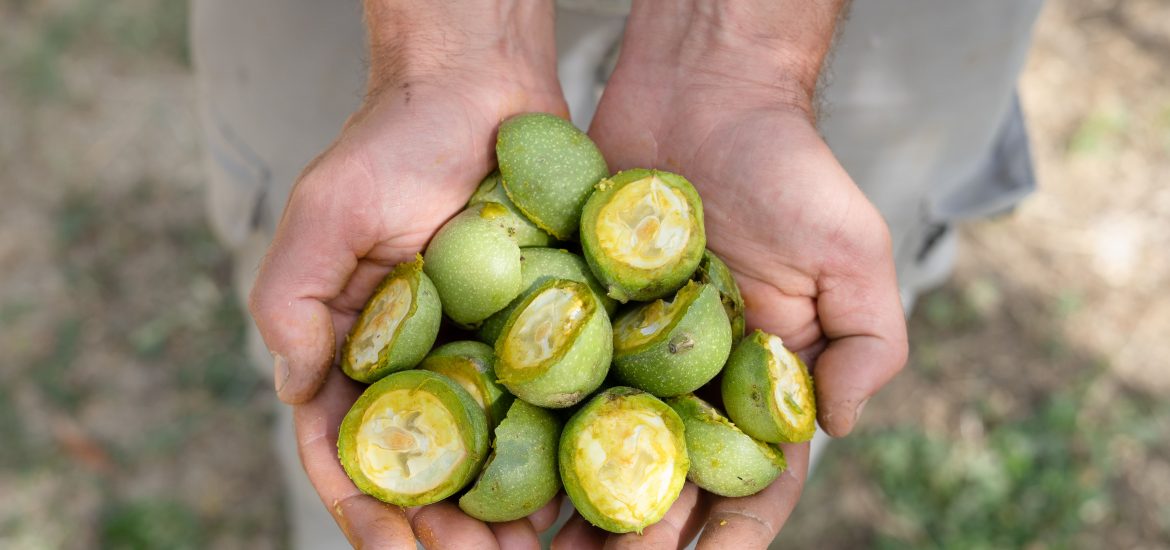It’s the end of June, the Vignamaggio hills shimmering as a gentle summer breeze caresses the vineyards, the blooming lavender, and the foliage of the walnut trees. And it’s these trees that we talk to you about today, because the walnut is the hero of a traditional liqueur prepared during the feast of Saint Giovanni and enjoyed during the Christmas season.
Vignamaggio’s walnut trees
Our walnut trees populate the valley below the Vignamaggio hills, witnesses of a long history alongside the Greve river. The foliage of these enormous, age-old trees casts so much shade that grass struggles to grow anywhere near the trunk and roots.

The walnut tree is paradoxical because its fruit can be toxic if processed and used incorrectly. This is because the Juglone, the primary molecule of the Juglans regia (botanical name of the walnut tree), can be a panacea or a poison, depending on its dose and use.
The fruit of the walnut tree, harvested at the end of summer and removed from its black hull, contains an edible nut that is nutrient and fat dense. It is an energy rich food that is easy to store, making it perfect to use during winter and the beginning of spring.

A tree with magical powers
In peasant culture, walnut trees have always been highly regarded. The Latin name Juglans regia is associated with worship of the god Jupiter, of the Sun. In fact, in ancient Rome, the walnut was called Jovis glans, Jupiter’s kernel. It was also symbol of childhood (children enjoyed playing with them, breaking the shell and then eating the precious contents). It was also revered by the Lombards. Since medieval times, the walnut tree has been attributed magical and evil qualities.
It was particularly during the transition from paganism to Christianity that the walnut tree was associated with forbidden and obscure cults. During medieval times it was believed that during the witch’s sabbath, witches and devils always met under the heavy crowns of walnut trees. These beliefs had no influence on peasant culture however, and the walnut tree was always loved and grown for its beauty and importance in the diet.

Nocino of San Giovanni
A tradition that has endured since ancient times is the preparation of walnut liqueur called Nocino during the night of Saint Giovanni.
The 24th of June, Saint Giovanni’s Day, is the day green walnuts are picked and prepared for their liqueur. Tradition has it that on that day the nuts are perfect for soaking in alcohol to make Nocino, no coincidence that the longest days of the year are those between the 20th and the 24th of June, and the summer solstice, the festival of the Sun and its light.
A recipe for homemade Nocino
Ingredients
1 litre alcohol for liqueurs
24 walnuts
Half a litre of water
Lemon peel to taste
500 grams of sugar
How to make Nocino:
- Pick the unripe walnuts on the 21st of June (or the 24th if you want to take advantage of this “magical” day, according to tradition). Don’t taste them because they are poisonous. We also suggest you use gloves when picking them because the juice of the husk is a strong black colorant.
- Cut the green walnuts in half and let them soak in glass jars in a mixture of alcohol, water and sugar until October.
- In October, strain the liqueur obtained and discard the soaked green walnuts. Bottle the liqueur and let it rest until Christmas, when it will be ready to drink.


